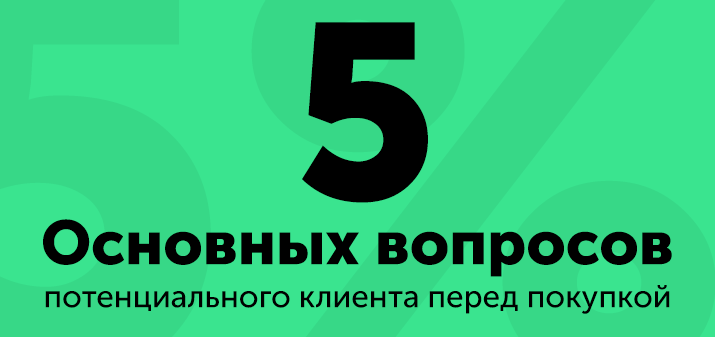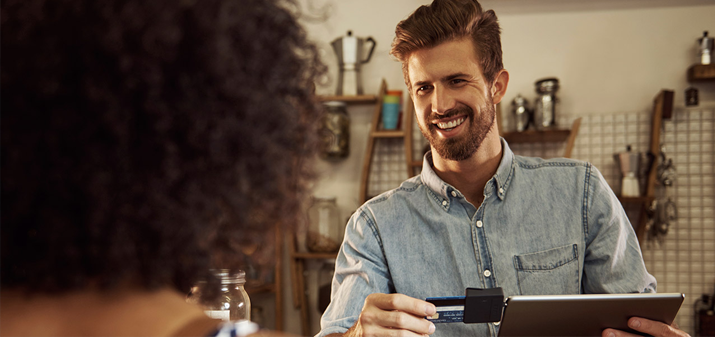5 Essential Questions to Ask a Potential Customer Before Buying

Selling goods online is a fairly common business today. But many professionals working on such a site rarely cross the 5% conversion rate. And if we compare online and offline sales, then the picture, frankly, is not rosy for online sales. Such statistics may seem strange, because online shopping is convenient, mobile, and generally more enjoyable.
The bottom line is that without being directed to the right ideas, you won't sell anything, no matter how persuasive your offer is, no matter how cool the design and usability of the site, and all that sort of thing. How to understand what is right and what is not? Here, unfortunately, one split-testing is not enough. It's much more effective to step into the client's shoes and ask yourself what you think potential clients would be interested in. Most likely, low conversion is due to a lack of understanding of customer behavior and its modeling at various stages of the sales funnel.
Let's take a look at the funnel and compare it to the typology of customers, considering the motivation and level of awareness of the person. It will look like this:
Brief description of each stage

Awareness of need - here a person is aware of the need for something.
Search for information - at this stage, a person begins to search for information on the product he needs in order to satisfy his need.
Initial evaluation is the stage when the consumer begins to evaluate the options, choosing the most suitable ones.
Competitor research - there are already several selected options and the consumer compares them.
A call, an application is a target action performed by a potential client in order to get what they want.
Meeting and negotiations - at this stage, a personal meeting with the client takes place. Most often, this step is needed in sector b 2 b .
Purchase / order - here, from the category of a potential client, a person moves into buyers / customers.
Customer loyalty - if the buyer / customer after using the purchase was satisfied, and perhaps received a little more than expected, customer loyalty comes.
This is not the only option for a sales funnel, but just a simple version of it. Some specialists add emotional marketing to the funnel: desire, passion, love, envy, etc. In any case, the process of going through the funnel is always tied to the main stages: first, a person realizes the need for something, then, following the steps described above, he comes to satisfy his need - a purchase.
If you look at the figure again, you can see the lack of motivation for the consumer to go through all the stages (if we are talking about an online sale). That is, the consumer does not understand why he should buy something. That is why sales do not occur. But if we consider complex b 2 b services, then motivation and explanations of “why us” are the basis for successful sales. It is impossible to sell a person a solution to a problem without pointing it out and explaining that he really needs it.
Types of consumers: what they are interested in, what needs to be explained and how to properly motivate

Let's return to types of consumers. There are 5 of them:
User.
informed user.
Lead or potential client.
Established Buyer.
Loyal client.
User. The first and main question is: “What do I need and who can offer it?”.
There are many reasons to buy. If you're selling online, think about what the customer needs. Almost always the needs are:
- How to buy cheap and high quality?
- I want like him!
- I want to buy “something” faster, I don’t want to wait!
informed user . He asks himself the question: “How is this better than what I already know / saw / tried?”.
If what you offer does not compare favorably with the offers of competitors, then the user does not need to buy from you. Give arguments that your competitors do not have. Using the same methods of persuasion as competitors, you are unlikely to achieve your goal. People opt for ordinary promises, plus a little more.
Lead or potential customer . Asks the question: “Are you deceiving me?”.
No matter how hard you try, but if you look unconvincing and the person does not believe you - do not be buying. Just promising is not enough. Give the user a reason to believe that you can be trusted. To be more convincing, use typography/infographics to show numbers from statistics.
Established Buyer . He asks himself: “How valuable is your offer?”.
What are the most plausible, effective reasons your prospects have to take the action you want? All landing pages should be rooted in cause. A value proposition from you is an offer that brings together the best reasons a person has to act. If you know all the reasons, focus on the key ones that matter to your customers. This will be the main key to conversion growth.
Loyal customer . Asks the question: “How can I become part of the company, how can I help it?”.
The most valuable type of client. It occurs when a person, having used a service or bought a product, was satisfied and, perhaps, received a little more than he expected. Such clients can eventually become brand advocates.
